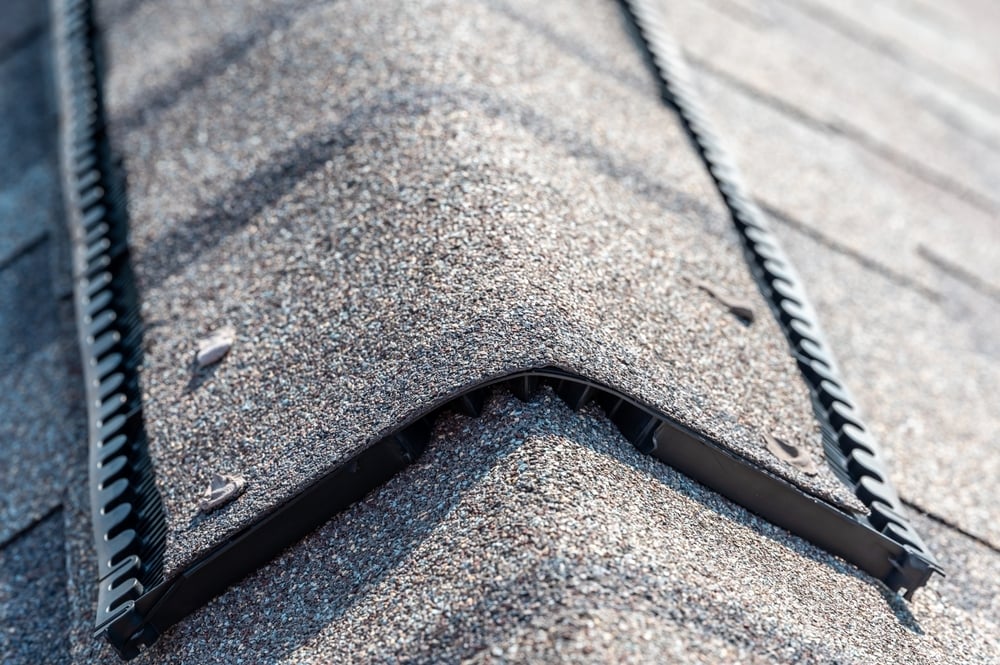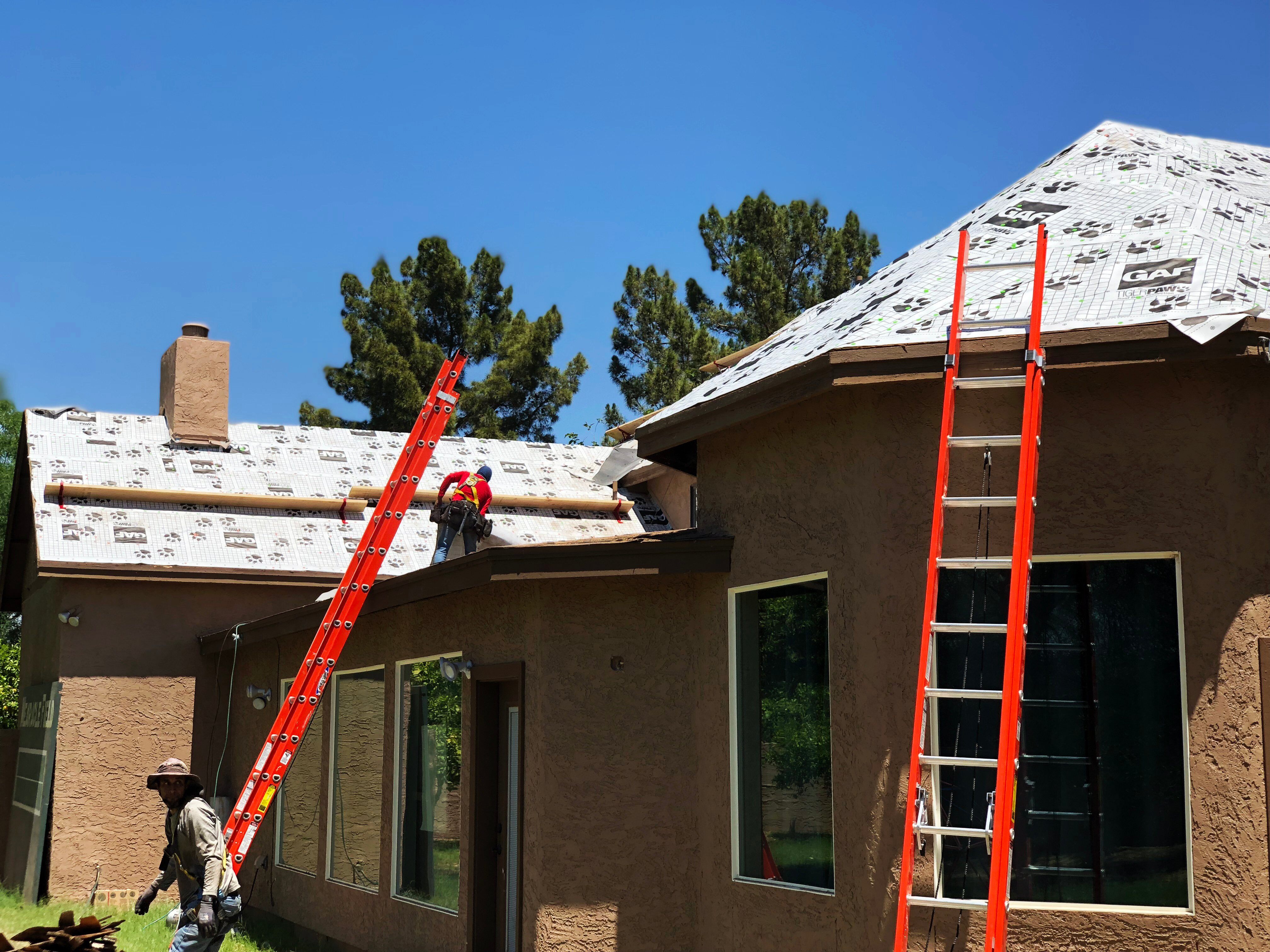Roof Underlayment 101: What It Is & Why It’s Important
Home / Azul Blog / Roof Underlayment 101: What It Is & Why It’s Important When most homeowners think about their roof, they picture the tiles, shingles, or foam that cover the top...
7 min read
Jack Daniels, Estimator and Sales Integrator : August 01, 2025

Proper roof ventilation isn’t something many homeowners think about, but it’s one of the most important aspects of maintaining a healthy, energy-efficient environment. Without it, heat and moisture can build up in your attic space and lead to mold growth or damage over time.
Two of the most common options when it comes to roof ventilation are ridge vents and box vents. Each of these systems works differently and the right choice will depend on your roof design, local climate, budget, and aesthetic preferences.
In this article, we help you understand the differences between ridge vents and box vents, including the pros and cons of each and things to consider when choosing the best option for your home.
Before we get into the details of ridge vents vs box vents, let’s talk a bit about how roof ventilation works and why it’s so important for a healthy and energy-efficient home.
Roof ventilation allows cooler fresh air to enter your home’s attic through intake vents (usually located at the soffits) and pushes out hot, moist air through exhaust vents positioned near the roof’s peak. This continuous airflow helps regulate attic temperatures and reduce humidity levels year-round.
Many people don’t realize how much everyday activities like cooking, bathing, and even breathing release moisture into the air. This moisture eventually rises and collects underneath the roof. Without proper ventilation, there’d be nowhere for this heat and moisture to go, leading to mold growth, rot, and damage to insulation and roof materials. Ultimately, this would shorten the lifespan of your roofing system.
In Arizona’s extreme heat, trapped attic air can also increase indoor temperatures, placing added strain on air conditioning systems and driving up electricity bills in the summer. That’s why most roofing systems include a balanced ventilation strategy (equal parts intake and exhaust vents) to keep the attic dry, cool, and well-ventilated.
Ventilation systems fall into three general categories: natural, mechanical, and mixed-mode.
This is the most common and often the most effective method for ventilating a roof. It relies on passive airflow, where cool air enters through soffit (intake) vents while warm air rises and exits through ridge or box (exhaust) vents. When positioned correctly, natural ventilation uses wind and thermal buoyancy to create continuous airflow without the need for powered assistance.
Mechanical ventilation uses powered fans to force air movement. These systems are more common in enclosed spaces like bathrooms or workshops where natural airflow isn’t enough. When it comes to roofs, we don’t really recommend mechanical ventilation. If not installed properly, this could do more harm than good by drawing in rain or snow, potentially damaging insulation, rafters, and other structural roof components.
Some buildings use a combination of natural and mechanical systems to ensure consistent airflow, especially in complex rooflines or difficult climates. This can be effective in certain situations, but it’s not usually advised for standard residential roofs as it can potentially lead to moisture issues if not carefully designed.
For that reason, we’ll focus solely on natural roof ventilation in this article and the two most common options: ridge and box vents.
Read: Four Ways Your Roof Can Cut Your Electric Bill
Ridge vents are a type of exhaust vent installed along the peak (or ridge) of a sloped roof. They’re designed to let hot, humid air escape from the attic, and work along with soffit vents to create a balanced and energy-efficient ventilation system. Because hot air naturally rises, ridge vents are ideally positioned to allow it to exit the attic space without needing mechanical assistance.

Ridge vents are commonly used in residential homes, especially those with shingle roofs, and are often built into the roofline for a sleek and less-obvious appearance. The vent is covered by ridge cap shingles so it can blend in with the rest of the roof while still providing continuous airflow.
Ridge vents operate through natural convection. When warm, moisture-laden air accumulates in the attic, it rises to the highest point (along the roof ridge) and exits through the ridge vent. At the same time, cooler outside air enters through intake vents (usually located at the eaves) to create a continuous cycle of air exchange that helps regulate attic temperature and humidity.
The benefits of ridge vents include:
Some of the cons of ridge vents include:
Similar Reading: What Type of Roof Underlayment Do I Need?
Box vents, sometimes called static, louver, or pod vents, are individual roof vents typically installed near the ridge of pitched roofs. They’re usually square or rectangular in shape and sit on top of the roof like a small box, with no moving parts. Like ridge vents, their purpose is to allow heat and moisture to escape from the attic.

But unlike ridge vents, box vents aren’t part of a continuous system. Each unit operates independently, and usually multiple vents are required to be spaced across the roof for proper air ventilation.
The benefits of box vents include:
Some of the cons of box vents are:
To help you better understand the difference between these two ventilation types, let’s do a side-by-side comparison:
|
RIDGE VENTS |
BOX VENTS |
|
|
LOCATION |
Run continuously along the peak (ridge) of the roof |
Placed individually near the top of the roof |
|
AIRFLOW |
Provide continuous, even airflow across the entire roof |
Operate independently and multiple units are needed for larger coverage |
|
APPEARANCE |
Blend seamlessly into the roofline and are less visible |
Raised above the roof and more visible |
|
INSTALLATION |
Require professional installation and roof modification |
Easier installation and can be suitable for DIY in some cases |
|
EFFICIENCY |
More efficient and uniform ventilation |
Effective but less efficient than ridge vents overall |
|
WEATHER RESISTANCE |
Protected by ridge caps and can generally resist rain and snow well, although intrusion is possible |
Covered design protects from snow and rain, but can be more vulnerable to weather intrusion if not properly sealed (which is why professional installation is important) |
|
MAINTENANCE |
Minimal |
Minimal |
|
ENERGY EFFICIENCY |
High, uses natural convection |
Also uses natural convection but might need more units to achieve similar results |
Learn More: 4 Easy Tips to Maintain Your Roof's Health
Still unsure which option is best for you? Here are some things to consider when choosing between ridge vents and box vents:
Ridge vents are best suited for sloped roofs with a continuous ride line, which allows for even ventilation across the peak. Box vents, on the other hand, can be used on a wider range of roof shapes, including those without a defined ridge or with complex designs.
In a hot climate like Arizona, ridge vents generally provide more efficient airflow and help reduce heat buildup in the attic. If you live in a part of the state that gets snowfall, however, box vents might be a better option as their covered design offers added protection against snow intrusion.
Box vents are generally more affordable compared to ridge vents. Ridge vents are a bit more expensive to install, but they offer continuous airflow and a more aesthetically pleasing look that some homeowners prefer.
Both ridge and box vents require minimal upkeep, but ridge vents do have a longer lifespan thanks to their streamlined design and fewer exposed seams.
See: 4 Ways Regular Roof Maintenance Can Save You Money
Ridge vents are integrated along the peak of the roof and require professional installation. Box vents require cutting into the roof deck and adding flashing to prevent leak, which can be a more involved process on existing roofs. Some homeowners prefer box vents as they can be done DIY, however there’s always the risk of leaks if not installed correctly.
Ridge vents blend into the roofline and are nearly invisible from the ground, which makes them more preferable for homeowners wanting to maintain curbside appeal. Box vents are more visible and considered less visually appealing, but they can be installed in less visible parts of the roof so they’re less noticeable.
If both types of roof ventilation have their own advantages, you might be wondering why not install them both? In reality, this can actually do more harm than good. This is because mixing different types of exhaust vents disrupts the natural airflow pattern your roof needs to ventilate properly.
If you were to install both ridge vents and box vents on the same roof, air would circulate between the two exhaust points rather than flowing from soffit (intake) vents up and out. This short-circuits the ventilation system and reduces airflow from the attic, leaving heat and moisture trapped in areas where it can cause damage.
This is why ridge vents should never be paired with box vents, or even with other exhaust systems like gable vents or turbine vents. For proper roof ventilation, it’s best to choose one exhaust method and pair it with an appropriate amount of intake ventilation.
To maintain effective airflow and reduce the risk of condensation or heat build-up, the general guideline is one box vent for every 968 square feet of roof space. That said, this isn’t a one-size-fits-all rule and the exact number you’d need will depend on the size and shape of your home, your roof pitch, and the type of ventilation system installed.
Some more advanced roof ventilation systems can deliver the same performance of multiple natural vents in a single unit, meaning you’d need fewer vents to achieve the same results. With fewer vents you also need fewer roof performations, which can reduce the risk of leaks and preserve the integrity of your roofing system. For the best guidance, we recommend consulting with an expert roofer who can assess your attic and recommend the right number and type of vents for your home.
If you’re still unsure which type of roof ventilation is best for you, our team at Azul Roofing Solutions is here to help. We can take a look at your attic and roof design to recommend the best ventilation solution for your home or business, budget, and preference. Call us now on 480-689-5055 or book a free roof evaluation with us today.

Home / Azul Blog / Roof Underlayment 101: What It Is & Why It’s Important When most homeowners think about their roof, they picture the tiles, shingles, or foam that cover the top...